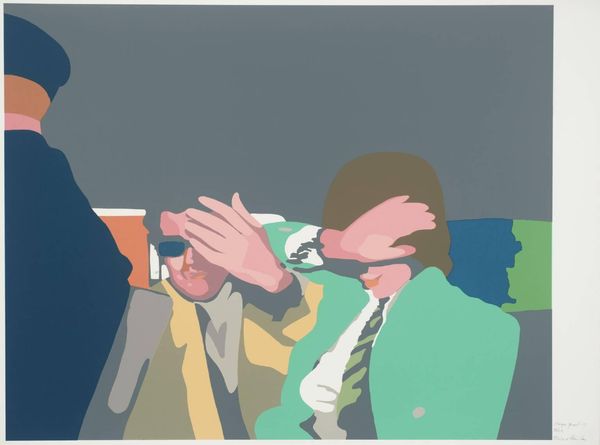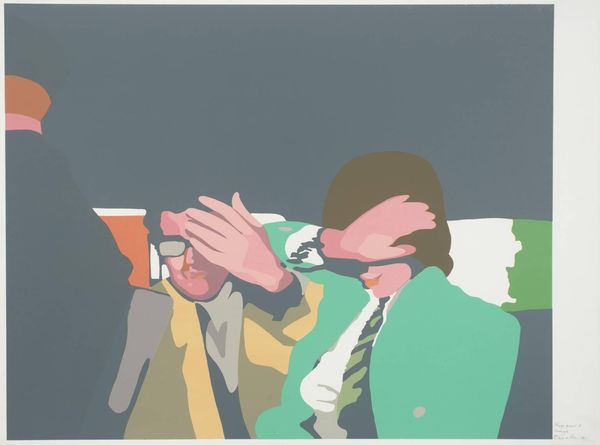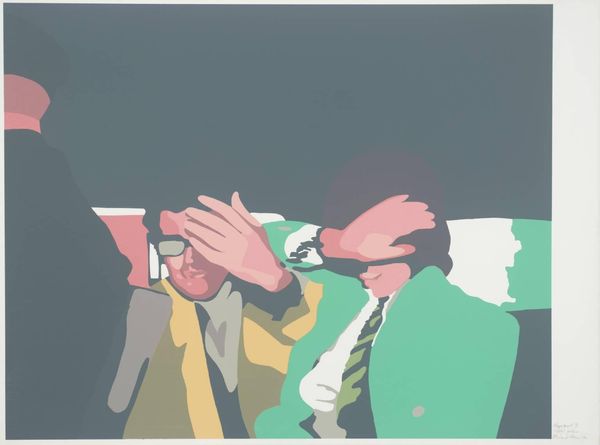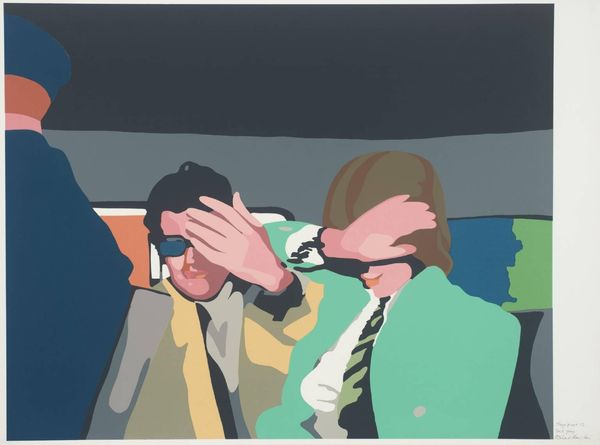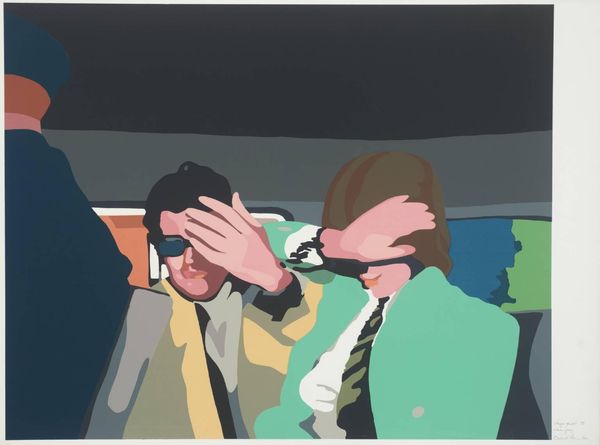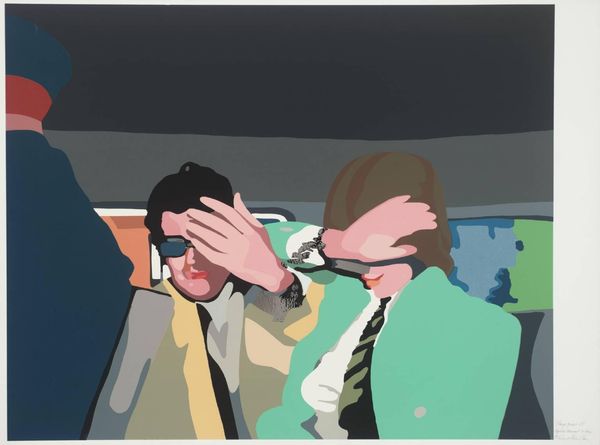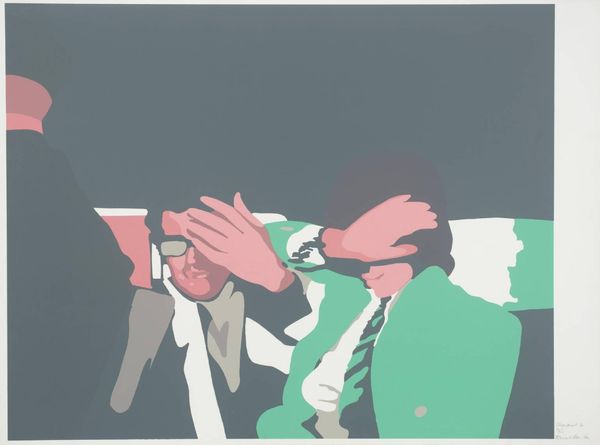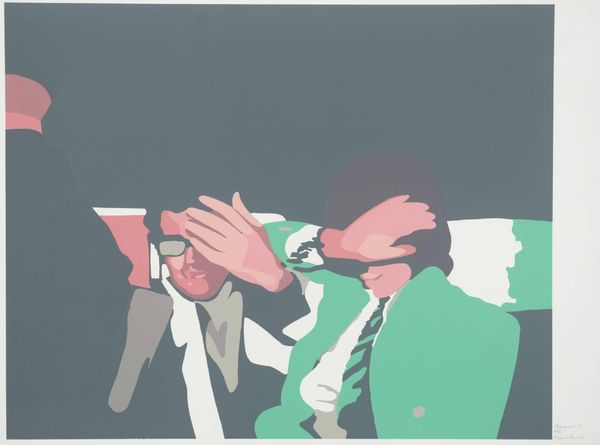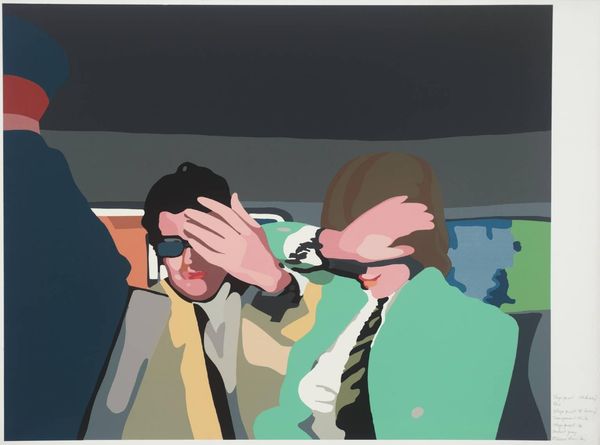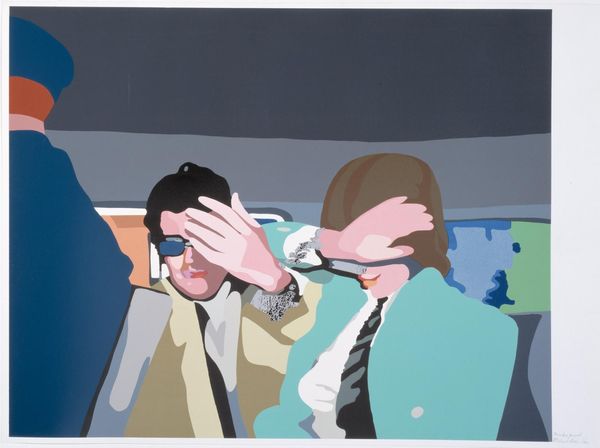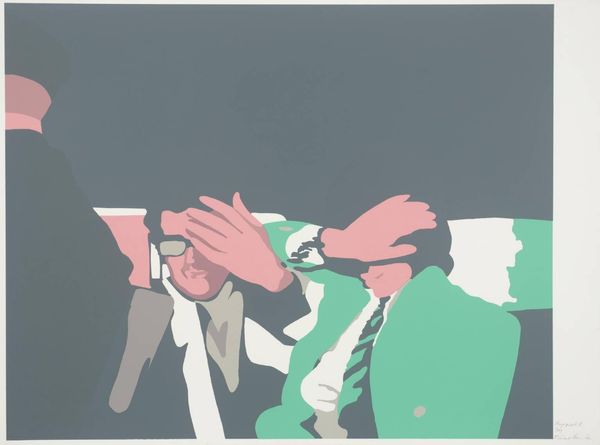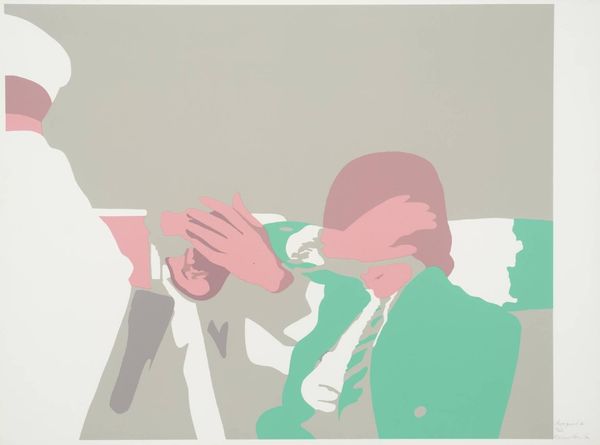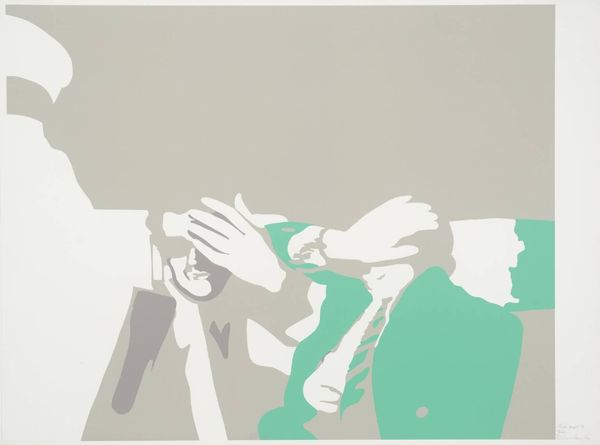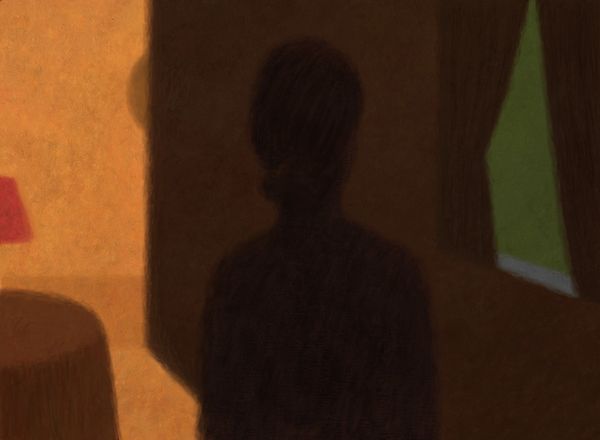
Dimensions: image: 682 x 857 mm
Copyright: © The estate of Richard Hamilton | CC-BY-NC-ND 4.0 DEED, Photo: Tate
Curator: Richard Hamilton's "Stage Proof 11" features bold blocks of colour and figures shielding their eyes. What jumps out at you? Editor: It feels so cool, so detached, yet vulnerable. Covering your eyes is such a primal gesture. Curator: Indeed. The covering of the eyes is a recurring motif, often symbolizing ignorance, avoidance, or even blindness to truth. Editor: Or maybe they're just shielding from the glare of celebrity? The flatness and the colours feel so Pop Art, so commentary on image culture. Curator: Yes, Hamilton, a Pop Art pioneer, was deeply interested in the impact of media on our perception. The obscuring of the faces could be a statement on the loss of identity. Editor: I like the ambiguity. It’s like a visual poem, incomplete and yearning for my projection. Curator: Absolutely, and that's the enduring power of Hamilton's work: it invites us to question the images that surround us. Editor: Exactly. It's why I love this; it lingers, unsettling and thought-provoking.
Comments
tate 7 months ago
⋮
http://www.tate.org.uk/art/artworks/hamilton-stage-proof-11-p02426
Join the conversation
Join millions of artists and users on Artera today and experience the ultimate creative platform.
tate 7 months ago
⋮
Release – Stage Proofs 1-13 and 16-19 (P02416-32; the series is incomplete) is a group of seventeen prints showing the process of building up colour to make the print Release (P04254). Each proof represents the successive addition of a screen, made from a hand-cut stencil, used to apply a particular colour. The completed print Release combines the seventeen colour screens, each used once, and the photographic black screen which has the texture of an imprint on canvas as well as the photographic halftone, used twice.
